Beaches are a highly desired attraction for vacations or holidays and with good reason! Beaches are vast gateways to some of the most gorgeous views of the ocean.
From the crisp sands, vibrant shades of blues and greens, and lush backdrops of vegetation, beaches certainly offer a remarkable visit.
With such iconic views, it leads to the curiosity of how beaches are actually formed
Formation Of Beaches
Most beaches are formed by waves or currents washing up sand, rocks and other sediments onto shorelines of outer-lying parts of continents. This process is more than just waves or currents carrying these items onto shorelines worldwide. In fact, the process is quite fascinating!
The formation of beaches dates back millions of years. This extremely dated process has helped to give a base for beaches to continually be changed and reformed. While this is not always seen by the naked eye, beaches are constantly everchanging.
In areas like Australia for example, its preliminary beach fronts were formed when it broke away from Antarctica. Once that happened, Australia, specifically the NSW area, gained astronomical amounts of debris from mountain areas on Antarctica.
It is said that floods of melted ice from this area made their way to the shorelines of NSW Australia. In regards to basic beach formation, sand can be made of quartz, corals, rocks, seashell pieces, etc. All of these are deposits brought forth to shorelines carried through the ocean and pushed ashore by strong waves.
The motion of these waves and the miles upon miles that these deposits may have travelled results in smoothed edges. This is particularly true for quartz beaches which are considered to be perfectly sized and soft to the touch.
Moreover, the constant movement of the ocean and its various waves are what make these deposits truly unique. It makes for no single piece to appear exactly the same.
When looking at a beach from this perspective, their immersive beauty is even more stunning.
It is commonly believed that what a beach is made from helps identify the region in which that beach is located. Geological speaking, these materials can travel from miles and miles away, however, they can be from region-specific sediments.
Once again, it all really boils down to these sediments becoming smooth enough to create these sands along the shorelines.
How Are Pebble Beaches Formed?
Overall, no matter what beach sand is comprised of, the process in which it is formed is pretty standard. However, pebble beaches are distinctively formed a little differently.
Pebbles, in general, are usually extremely smooth in texture. This is obviously similar to how all beaches are made as the pebbles roll around within the constant movement of waves and tides. This action in itself aids in making the textures slick and smooth.
What really sets pebble beaches apart from regular beaches is where the sediments originate. When waves crash into large cliff sides, falling pieces are captures in the waters.
These pieces go through erosion and an extreme breakdown to create the small, smooth pebbles.
Even more idyllically, these pebbles are continuously ground down into finer and finer pieces as they travel along the waters. This creates smooth, tiny pebbles that wash up along shorelines.
It is incredible to think that ocean waves and tides can be strong enough to break off chunks of these cliffs.
This truly gives insight into how remarkable pebble beaches are as well as other types of beaches.
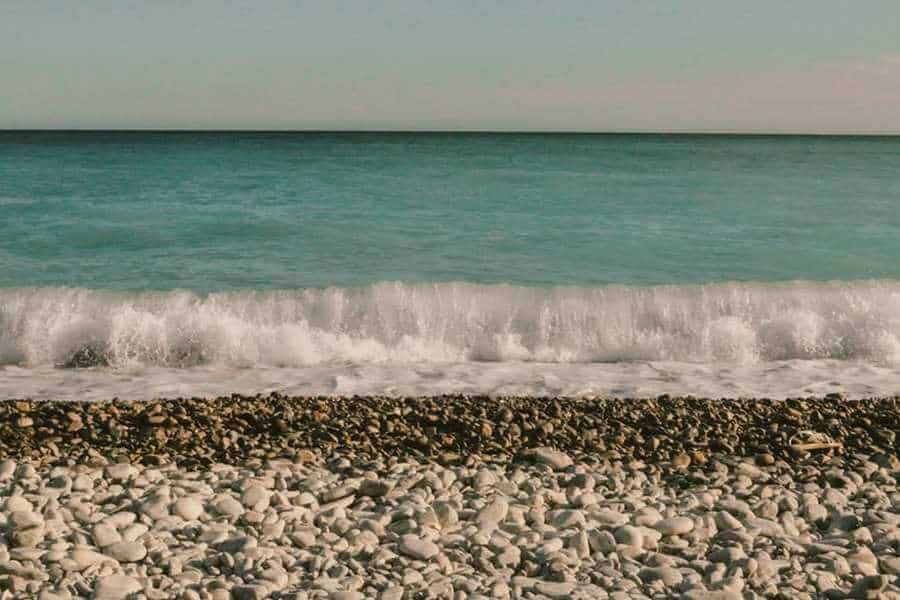
Various Coloured Sand Beaches
The deposits that wash up along shorelines to form beaches can come in so many different colours. These colours are the result of the material from which the sand is derived.
Some beaches even have multi-coloured sands creating such a rainbow of beauty.
When assessing these gorgeous colours, knowing their overall origins helps put their colours into perspective. Below are the top colours that can be found on beaches all over the world!
- White – This colour is generally quartz and limestone
- Light-Coloured – Typically derived from quartz and iron
- White (in tropical areas) – This colour is made up from finely ground seashell pieces which are usually made of calcium carbonate.
- Pink – This pale peachy pink colour comes from calcium carbonate that is primarily mixed with coral pieces.
- Black – This colour on a beach is not too common, but is from volcanic rock. These types of beaches are unique in their own way.
- Red – Red is also considered volcanic rock sediment. However, it is moreover considered iron that has been oxidized.
- Orange – This vibrant colouring is usually a mixture of seashells, orange limestone, iron, and even volcanic rocks.
- Green – It may seem absurd that some beach fronts have green sands, but it does occur. These sanded shores are believed to be made of olivine. This particular coloured beach forms from eroded volcanic forces.
These colours are found worldwide and really make for tremendously beautiful beaches. The specific colouring makes them unique and as expressed before, relative to their particular regions.
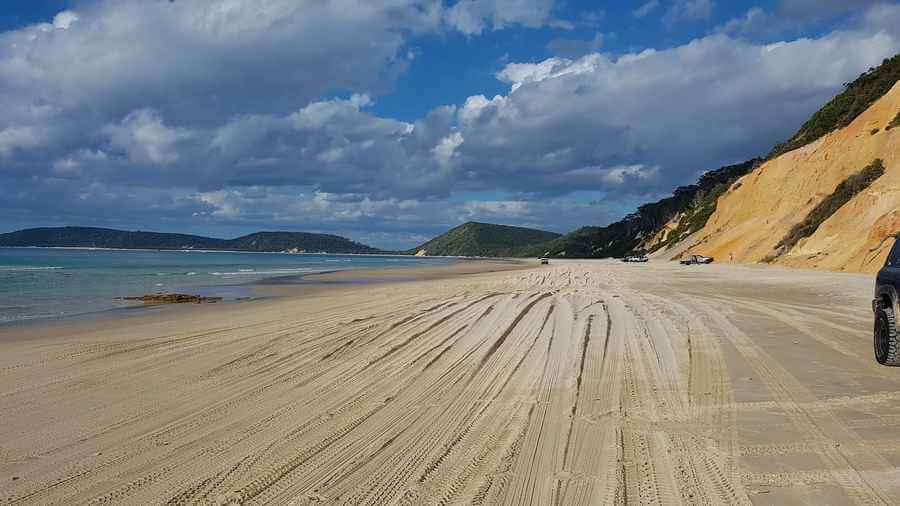
Beaches: No Two Are Alike
No two beaches will ever be exactly the same. Moreover, beaches all over the world are in a constant state of change. The waves and tides consistently crashed upon the shorelines keeps the shape and overall look of beaches always appear slightly different.
While this may not be immediately noticed by a general glance, it can be noticed throughout many years of this activity. When people take a trip to beach fronts, their experience in witnessing these natural forms of art is breathtaking.
The ever-changing shorelines around the world along continents are mobile, moving pieces of art. It will continuously be a way that shorelines become even more gorgeous beachfront areas.
Perhaps this is what attracts people to beaches all around the world for vacations or holidays. Whether people notice or not, their eyes are beholding these works of natural art be formed.
Spending time on the beach gives way to experiencing this as well as enjoying the tranquil and picturesque atmospheres that beaches truly provide their visitors!
What Are The Types Of Beaches?
Beaches are found all over the world and are by far one of the most iconic places to visit. Everyone is aware of their gorgeous views and sandy shores. However, not all beaches are created equal. In fact, there are multiple types of beaches and each type is a little unique in its way.
The characteristic that really makes a beach different from another beach is what its sand is made of. When someone thinks of the word “beach, generally gold or white sand comes to mind. But, alas, there are many other natural materials that a beach’s shore can be made from.
Beaches are areas of land that are generally in a bay where the land touches water. Depending on where a beach is located, the type of material that the beach is made of will vary. This is what makes beaches truly unique.
In general, beaches are products of eroded material that is deposited onto the edges of shorelines across the globe. Below are some various examples of what type of beaches are found throughout the world!
Types Of Beaches Found Throughout The World
Sand Beach
Sand beaches are the most popular among the different types of beaches. They are typically fine to medium grain in texture which makes them quite comfortable to walk on. People usually recognise gold, yellowish, or white coloured beaches but there can be other hues of sand.
From pink to red and even black, sand beaches are quite beautiful. The colour of a beach will heavily depend upon what type of organic material is around. For example, black sand beaches are a direct result of volcanic rock that has been broken down into fine sand particles.
Seashell Beach
It is hard to imagine a beach that isn’t made of sand, however, beaches aren’t just limited to sand particles. There are some beaches in the world that are made almost entirely of seashells. While they aren’t ideal beaches for sunset walks, they are still quite gorgeous to see.
These beaches feature thousands of seashells that have been washed ashore. They are usually broken up into small pieces but there can be whole seashells as well. These beaches are so special because seashells are formed by mollusc snails that have secreted an outer layer to their bodies to help protect themselves. As these creatures pass away, their shells are shed and carried off by ocean waves.
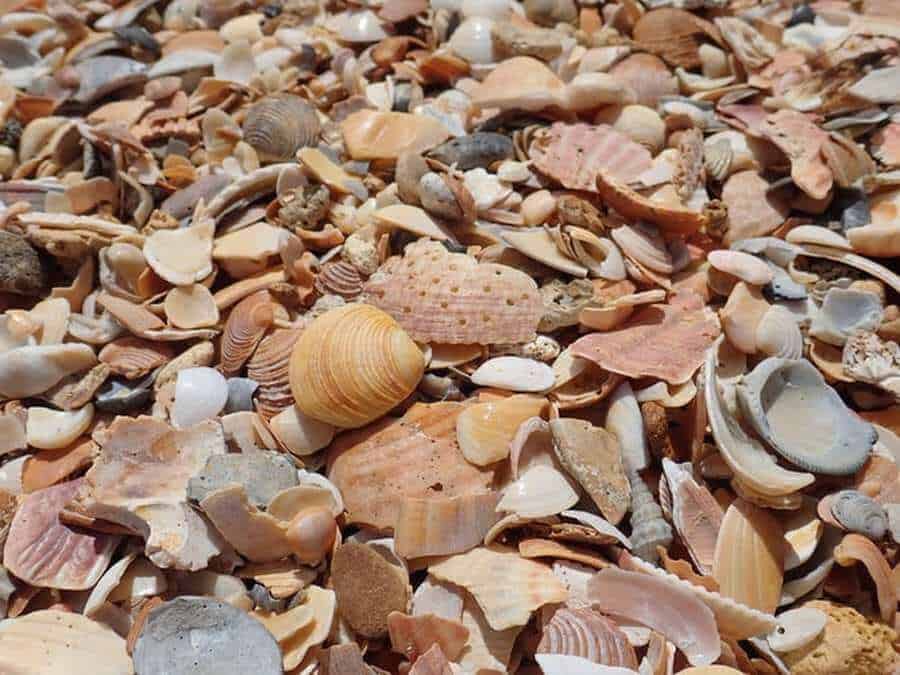
Sea Glass Beach
Sea glass can be described as a broken glass that has undergone weathering by the ocean. This process smooths the edges down while simultaneously frosting the glass. As a result, sea glass becomes pebble-like in shape and really quite beautiful to look at.
It is important to note that sea glass and beach glass aren’t quite the same. Sea glass specifically comes from saltwater while beach glass comes from freshwater. Both types are unique, however, sea glass is known to wash up along shorelines, creating stunning “sea glass beaches”.
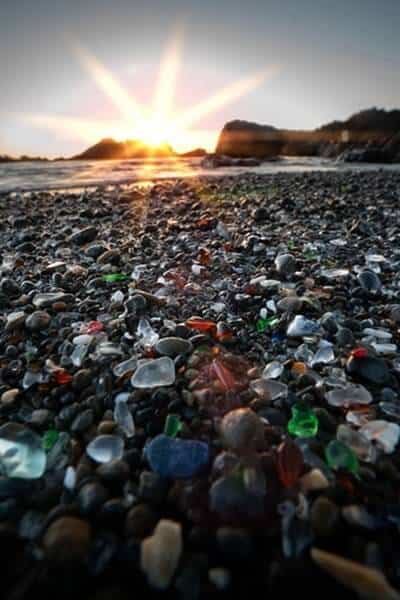
Pebble Beach
Pebble beaches are beaches that are almost entirely made up of pebbles. Pebbles are small stones that have been rounded and smoothed by the ocean’s current. They are small in size and often collected by enthusiasts for their various shapes and colours. They can be fun to walk along as the pebbles aren’t very sharp and are quite tiny compared to rocks.
Boulder Beach
Boulder beaches are another great example of nature at its best. These beaches feature a wide range of rocks that span a shoreline. From pebbles to massive rock boulders, these beaches are covered with jagged rocks. They are quite possibly the least popular type of beach and aren’t found in too many places around the world. They can notably be found in New Zealand, the Philippines, and Columbia.
All of these beach types have their own unique qualities. They are all stunningly beautiful and are incredible places to visit if given the chance.
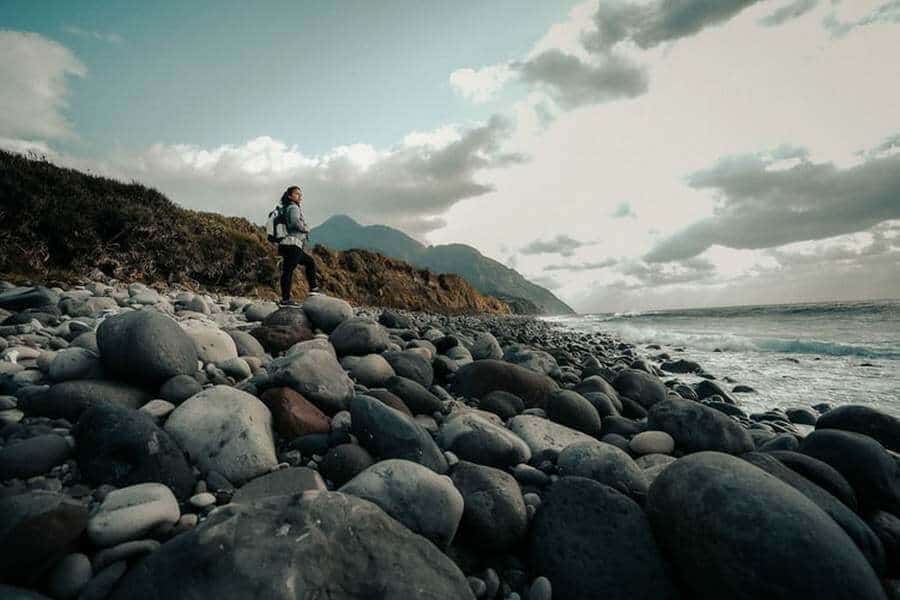
What Is A Beach Made Of?
As expressed before, beaches can be made of many different types of materials. From sand to sea glass to pebbles and everything in between, beaches aren’t limited to just one type of material. Beaches are usually formed by sands or other materials that have been exposed to ocean currents.
This exposure breaks down the material into the small particles we see on beach shorelines. The constant movement of the ocean waves is what breaks these particles down over time.
Even though there are many different types of beaches out there, sand beaches are by the most abundant. A majority of the time, when someone heads out to a beach, it will be made of sand. This is because sand is much more common than other materials (like pebbles or sea glass for example).
Sand, by basic definition, is finely processed rock or minerals. So in theory, “sand” isn’t a generic term, rather different materials can become a type of sand based on the material it is made from.
A great example of this would be black sand beaches where the “sand” is made of volcanic rocks. The colour is derived from the material that is broken down into sand particles. While most beaches will be golden, some are quite stark in comparison.
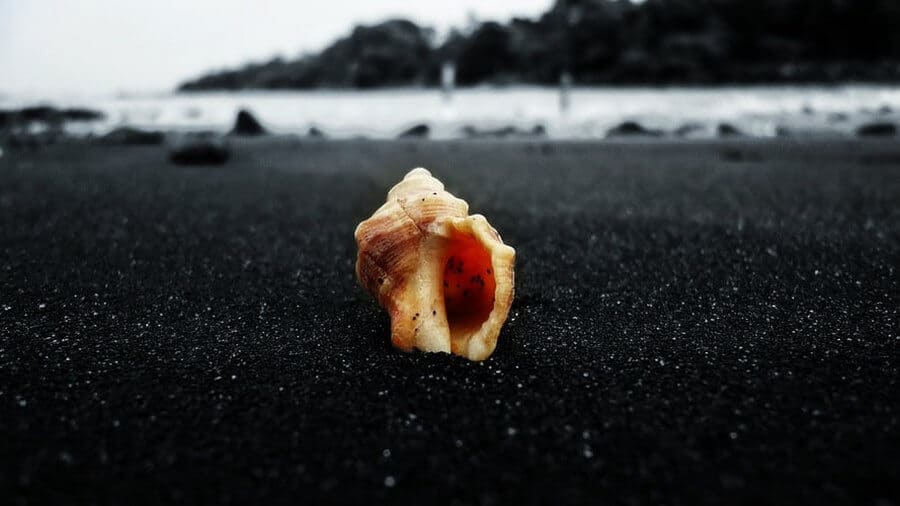
Is A Beach Formed By Erosion Or Depostion?
There are man-made beaches in the world, however, most of the world’s beaches occurred quite organically. There’s a bit of debate on whether or not beaches are formed by erosion or deposition. Before that can be directly answered, it is important to know the difference between “erosion

Erosion is the process in which materials like rock are broken down into smaller particles. This is primarily done by wind and water, especially water when it applies to beaches. The ocean is an ever-moving body of water that is constantly affecting what it is exposed to.
When rock sediments enter the ocean, they are broken down continuously by currents until they are transported and deposited onto shorelines around the world. This isn’t a quick process but when taking a look at beaches and their appearance, it is easy to see why it wouldn’t be such a quick turnaround.
Deposition can be defined as the process in which transported materials are settled into their final location. It is known as the final step in the erosion process. A deposition is a direct result of erosion and it aids in ensuring that broken-down particles are situated within their new location.
With this in mind, it could be said that beaches are formed by erosion and deposition considering that without erosion, deposition cannot occur.
Primarily, beaches will be formed by erosion in that the particles that make up the shoreline have been eroded over time. But, as a result of erosion, deposition is what actually brought the particles to the shorelines. One simply cannot exist without the other and so beaches are a direct result of both erosion and deposition.
Beaches are one of the world’s most fascinating natural occurrences. Between the different textures, a beach can present to the colours it can show, each beach around the world is special in its own way. Ultimately, no two beaches are exactly alike even if they may appear as such on the surface.
More Pages On Beaches
Not all beaches are suitable for swimming for a number of reasons. Some of these areas are more practical for sand activities or photography. It is important to know whether or not a beach is safe...
Visiting the beach is a beautiful opportunity to see mother nature at its best. There's nothing quite like hearing the waves rolling in on a soft, sandy shoreline. While visiting the beach is a...



